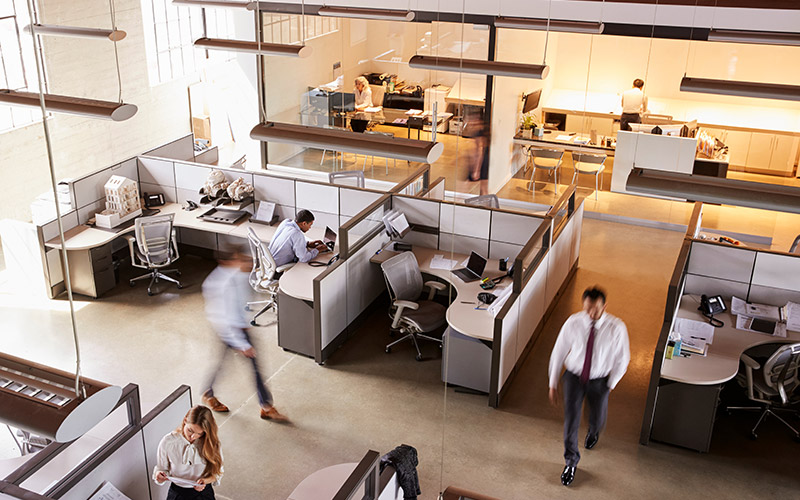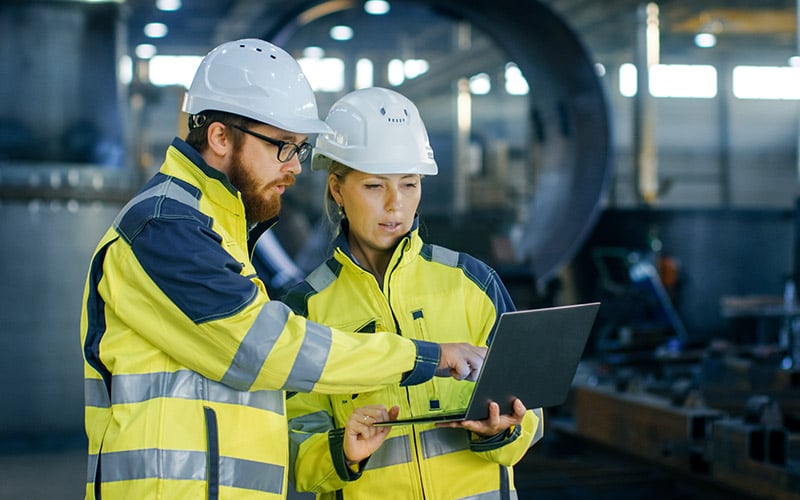Facilities Management for Commercial Real Estate

Nearly every piece of commercial real estate in every portfolio, no matter how different their uses, has one thing in common: they are filled with people, except for when they aren’t.
To most people, that’s unremarkable. In facilities management for real estate, however, it’s vitally important. Buildings have to be comfortable and safe when people are there without wasting money when they aren’t. This can be a complex process in one building and much more so when spread out across multiple buildings that serve different functions or are located in different regions.
For facilities managers, system integration and intelligent analytics can be instrumental in making buildings smarter, safer, and more efficient without sacrificing comfort.
The Challenges of Facilities Management for Commercial Real Estate
Commercial real estate uses a lot of energy. According to the US Energy Information Administration, a 100,000 sq ft office building annually uses 20kw hour of electricity per square foot. That consumption is primarily concentrated in these areas:
Lighting: 16%
Cooling: 16%
Computing: 18%
Ventilation: 25%
But these aren’t used consistently. In a single building, there might be extensive computer use, including server rooms, while other areas are much more low-tech. Rooms with west-facing windows may require significantly more cooling when the sun is setting than those on the other side of the building. Offices may be packed during the day and empty at night—unless there are overnight shifts. Managing a portfolio of multiple commercial sites can present even more challenging scenarios. A portfolio that encompasses office, retail, and manufacturing spaces, for example, faces a variety of peak hours, capacity issues, regulations, and equipment requirements.
While each building may have unique needs, they all demand the same result: comfort, efficiency, and reliability. As a commercial real estate facilities manager, it’s your job to provide all three while staying within budget.
In the past, the best you could do was set a thermostat and hope it hit the comfort sweet spot for the most amount of occupants. Now, smart technology and advanced analytics have opened up new possibilities, including strategic automation, that allow facilities management for commercial real estate to reconcile all the needs in their portfolio.

The Value of Integration and Analytics
Automation works best when people follow set patterns. If you know that an office will be empty at 5:30 p.m., the HVAC system can be programmed to start cooling at that time and turn up the heat the next morning when the building starts to fill back up.
But that kind of rigidity is rarely the case in real life. People come and go, and they move from one area of the office to the other. They crowd conference rooms and kitchens while leaving other spaces wide open. These complex and typically unpredictable patterns are even more pronounced in retail, where seasons, holidays, and the state of the economy can deeply influence foot traffic patterns. And HVAC isn’t the only system involved: air quality, lighting, and other system usage can fluctuate wildly.
To ensure buildings meet the needs of occupants while optimizing efficiency, standard automation is simply not enough. But when smart technology is introduced to building systems, automation becomes invaluable—and that starts with integration.
Master systems integration can unify disparate systems, install IoT devices and sensors, and deploy intelligent analytics to continuously monitor the data generated by building equipment. When this platform has machine learning capabilities, it can learn how your building functions, adapt to changing conditions in real time, and even predict the need for adjustments before it happens.
Centralized Control
Two of the greatest benefits of an advanced analytics platform are its ability to give you centralized, single-pane-of-glass control over your facilities and the insights to make pragmatic decisions. Rather than having to track multiple systems individually, you can see and adjust how they work, separately and together, at any given time.
Just as importantly, the analytics platform itself can understand how building systems work together and make changes based on real-time sensor data, historical patterns, and predicted conditions. For example, lighting can be adjusted based on occupancy sensor data, ensuring that occupied spaces are well-lit while avoiding energy waste in empty rooms. Buildings can be pre-heated or pre-cooled in anticipation of occupancy or changing temperatures. Air filtration can increase in a crowded meeting room while remaining unchanged when the room is only being used by one person.
When systems are operating according to needs, you can:
Optimize energy efficiency
Improve occupant comfort
Reduce wear and tear on equipment
As datasets expand, analytics with machine learning (ML) capabilities can become more accurate and precise. This means that comfort, safety, and efficiency will continue to improve over time.

Smarter Maintenance
Another key benefit of an integrated system with analytics is its impact on maintenance practices.
A smart system that learns how buildings work can provide data-backed recommendations for improvement, allowing for better prioritization of work orders and more efficient resource allocation. When an analytics platform includes advanced fault detection and diagnostics, maintenance can be transformed even further. Alert parameters can be refined, alarms can be prioritized, and problems can be isolated faster, even in complex systems.
Traditionally, maintenance crews check systems at regular intervals and fix only what is obviously needed. If there was nothing wrong at that moment, no further work is done until the next inspection, or when malfunctions become significant enough to force emergency truck rolls.
Advanced analytics offers a better approach. Because data is continuously mined, you can be notified of anomalies as soon as possible, preventing major equipment malfunctions that result in extended downtime and compromise the occupant experience. This means that needless inspections can be eliminated and maintenance crews can spend time on what really matters. Ultimately, this preventative approach saves time and increases efficiency for both equipment and people.
Additionally, analytics provides validation of fixes and allows for objective assessment of building improvements.
Cleaner Air
Today more than ever, air quality is a top concern for facilities management in commercial real estate. Improving air quality through ventilation, purification systems, HEPA filters, and other environmental applications, is quickly becoming a key factor in signing and retaining tenants and helping occupants feel safer returning to indoor spaces.
Air quality is dependent on a number of factors. In an integrated building environment, operational systems can work together to continuously monitor air quality and make adjustments according to real-time data. For example, ventilation in individual rooms or entire buildings can increase with occupancy and air purification systems can turn on as the work day starts or when quality drops below your preferred level. Analytics also allows you to demonstrate the effectiveness of new air quality measures and offer evidence of safety to occupants.

Embracing Smart Technology
Effective facilities management for commercial real estate means you have to understand what is happening in your buildings, when it’s happening, and why it’s happening. After all, occupants rely on you to provide a safe and comfortable space to conduct everyday business and receive important services. Meanwhile, building owners are counting on you to optimize energy efficiency and reduce waste. To achieve all of your objectives, you need an integration partner you can count on.
Buildings IOT specializes in systems integration and the deployment of smart technologies in both new construction and existing properties. A central component of this is onPoint, a data analytics platform that provides greater visibility into systems, 4D insights, customized reporting, and centralized control via a user-friendly dashboard.

